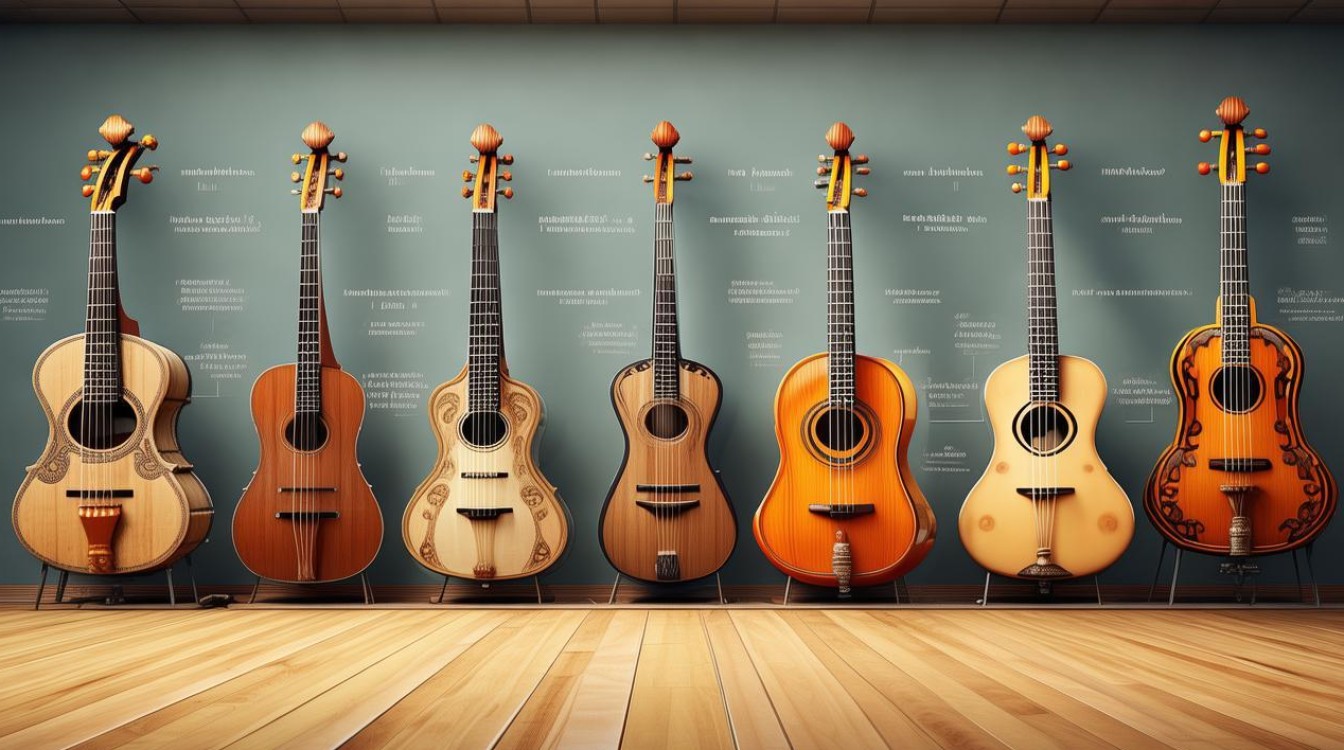Music is a universal language, and the instruments used to create it are as diverse as the cultures they come from. Whether you're a musician, a student, or simply curious, knowing the English names for various instruments can be helpful. Below is an extensive list of musical instruments categorized by type, along with brief descriptions of their roles in music.

String Instruments
String instruments produce sound through vibrating strings. They can be plucked, bowed, or struck.
- Guitar – A versatile instrument with six strings, commonly used in rock, pop, and classical music.
- Violin – A high-pitched bowed string instrument prominent in orchestras.
- Cello – Larger than a violin, played with a bow, known for its deep, rich tones.
- Double Bass – The largest and lowest-pitched string instrument in orchestras.
- Harp – A plucked string instrument with a distinctive triangular frame.
- Banjo – Features a circular body and is often used in folk and bluegrass music.
- Mandolin – A small, lute-like instrument with paired strings.
- Ukulele – A small, four-stringed instrument associated with Hawaiian music.
Wind Instruments
Wind instruments require the player to blow air into them to produce sound. They are divided into woodwinds and brass.
Woodwind Instruments
- Flute – A high-pitched instrument played by blowing air across a hole.
- Clarinet – A single-reed woodwind with a wide range of tones.
- Saxophone – Made of brass but classified as a woodwind due to its reed mouthpiece.
- Oboe – A double-reed instrument with a piercing, expressive sound.
- Bassoon – A deep-toned double-reed instrument used in orchestras.
- Recorder – A simple woodwind often used for teaching music.
Brass Instruments
- Trumpet – A high-pitched brass instrument with three valves.
- Trombone – Uses a slide instead of valves to change pitch.
- French Horn – Known for its coiled shape and mellow tone.
- Tuba – The largest and lowest-pitched brass instrument.
- Cornet – Similar to a trumpet but with a mellower sound.
Percussion Instruments
Percussion instruments create sound when struck, shaken, or scraped.

Pitched Percussion
- Piano – A keyboard instrument where hammers strike strings.
- Xylophone – Wooden bars struck with mallets to produce bright tones.
- Marimba – Similar to a xylophone but with a deeper, warmer sound.
- Vibraphone – Metal bars with resonators, often used in jazz.
- Timpani – Large kettle drums tuned to specific pitches.
Unpitched Percussion
- Snare Drum – A drum with metal wires underneath for a sharp, rattling sound.
- Bass Drum – The largest drum, producing deep, low-frequency beats.
- Cymbals – Metal discs that clash together for dramatic effects.
- Tambourine – A handheld drum with jingling metal discs.
- Triangle – A simple metal rod struck with a beater for a high-pitched ring.
Keyboard Instruments
Keyboard instruments produce sound through pressed keys.
- Organ – Uses air pushed through pipes to create sound.
- Harpsichord – An early keyboard instrument where strings are plucked.
- Synthesizer – Electronic keyboard capable of producing various sounds.
- Accordion – A portable instrument with bellows and buttons or keys.
Electronic Instruments
Modern music relies heavily on electronic instruments.
- Electric Guitar – Uses pickups to amplify sound.
- Bass Guitar – The electric version of the double bass.
- Drum Machine – Electronic device that replicates drum sounds.
- MIDI Controller – Allows musicians to trigger digital sounds.
Folk & World Instruments
Different cultures have unique instruments.

- Sitar – A plucked string instrument from India.
- Didgeridoo – A long wooden wind instrument from Australia.
- Koto – A traditional Japanese string instrument.
- Djembe – A goblet-shaped drum from West Africa.
- Bagpipes – A wind instrument with a distinctive sound, popular in Scottish music.
Learning the names of musical instruments in English helps in understanding music theory, discussing performances, or even shopping for gear. Each instrument has a distinct character, shaping the way music is composed and enjoyed. Whether you prefer the elegance of a violin, the power of a trumpet, or the rhythm of drums, there’s an instrument for every musical taste.
Music connects people across languages and cultures, and knowing these terms bridges the gap between musicians and listeners. If you’re passionate about music, exploring different instruments can deepen your appreciation for the art form.



